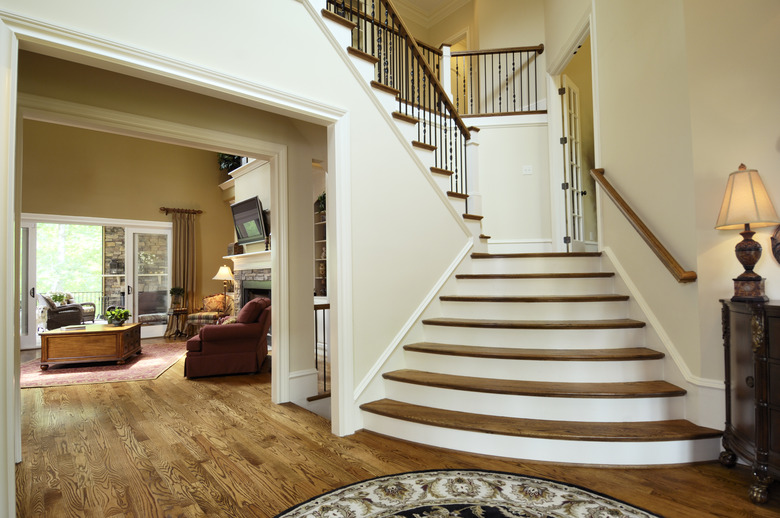What Is The Difference Between A Stair Tread & A Stair Riser?
You walk up and down stairs all the time, but have you thought about the parts that make up basic stairs? Most people don't think about it until they go to tackle a home improvement project, such as adding stairs to a deck or remodeling indoors. The treads and risers are two of the main parts of every set of stairs. Understanding the difference and how they work together is important when building stairs.
What Are Stair Treads?
What Are Stair Treads?
Stair treads refer to the horizontal pieces that form the stairs. Think of them as the part you "tread" or step onto as you climb the stairs. The depth, or the distance from the front of the tread to the back, is part of the run calculation in building steps. The size of each tread can affect both the comfort and safety of climbing the stairs. Treads that are too shallow don't give you enough room to safely plant your foot while you're going up or down the stairs. You might be more likely to slip or miss a stair. And you might feel unsteady even if you do keep your footing. An overly deep tread can make it tough to take just one step on each tread. You need a much wider stance to reach the next step in one motion.
What Are Stair Risers?
What Are Stair Risers?
Every set of stairs also has risers for each step. The stair risers are the vertical pieces on the stairs. The height of each step is called the rise. It's used in calculations to determine a safe and comfortable design. All stairs have a rise, but they may not all have risers. For example, outdoor deck steps often have open backs instead of having a piece of wood there to form risers. The height, or rise, of the steps also affects comfort and safety. If each step is too high, it can be tough to get up and down them. You might catch your toe on the top edge, for example. A high rise can also be dangerous for young kids with short legs.
How Stair Treads and Risers Relate
How Stair Treads and Risers Relate
The dimensions of the treads and risers work together to determine how steep the staircase is and how comfortable it is to use. When designing stairs, builders usually look at how the rise and run work together to create stairs that are easy to climb. A high rise and a shallow run makes for very dangerous stairs because you have to take a very high step and have very little space for your foot to land. A very low rise and a very deep step can be just as difficult to climb. The most important factor is to look at local building codes. These codes usually have very specific and strict regulations for building stairs to make sure they're safe.
Standard stair dimensions include risers that are at least 7 inches high and treads that are at least 10 inches deep. One guideline is to have a rise and run that equals about 17.5 inches when added together. That creates a safe and comfortable layout for the stairs. If you're building a set of stairs from scratch, you'll want to start with the total height or vertical distance from the landing at the top to the landing at the bottom. If you're going with the standard stair height, divide that distance by seven, which is the typical minimum height. That tells you how many stairs you need. For a 6-foot-high deck, you'd divide 72 by seven to get 10.3. So 10 stairs would work well for this project. Now divide the 72-inch total height by 10 to get 7.2. Each step would need to have a rise of 7.2 inches.
Understanding the difference between the stair tread and riser makes your home improvement project easier. You can more effectively calculate the rise and run of your stairs and make sure you meet the local building codes with a solid understanding of the two.
